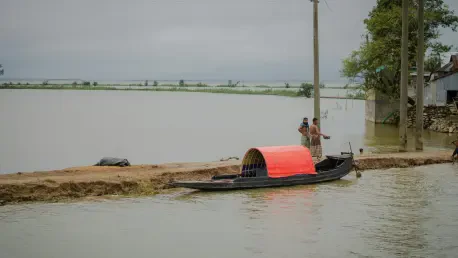In today’s rapidly changing world, the insurance sector faces unprecedented challenges as it navigates a “new normal.” Driven by increasingly frequent and severe weather events linked to climate change, this evolution in the insurance landscape pushes companies to rethink their strategies. Insurers are encountering a landscape where unpredictable natural disasters cause significant increases in claims. This unpredictable environment compels adjustments in conventional approaches, urging industry players to leverage innovative solutions to better manage growing claim complexities and demands.
Defining the New Normal in Insurance Claims
The research provides an in-depth exploration of the evolving dynamics within global insurance claims, primarily focusing on the effects of climate change and economic fluctuations. A pivotal theme is the impact of rising inflation on claim costs, as increased prices for materials and labor present significant hurdles for companies. As supply chain disruptions and international tariffs drive these costs higher, insurers face challenges in managing increased expenses. The study addresses critical questions about adapting to these challenges while maintaining profitability and customer service.
Contextualizing Global Claims Trends
This investigation highlights the urgent need for adaptation in the insurance field, given the backdrop of increasingly volatile weather patterns resulting in significant natural disasters. Such events not only escalate the frequency but also the volume of insurance claims, necessitating comprehensive research into their long-term implications. These developments underscore the sector’s relevance, as they directly impact stakeholders, from insurers to policyholders. As natural catastrophes become more prevalent, the emphasis on timely and efficient claims processing becomes crucial, underpinning the broader significance of the research.
Research Methodology, Findings, and Implications
Methodology
The study employs a combination of quantitative and qualitative research methodologies to gather and analyze relevant data. By integrating advanced tools such as catastrophe modeling and satellite imagery, the research provides actionable insights into the state of insurance claims. These technologies facilitate accurate assessments of property damages, distinguishing between initial and successive impacts of weather events. Additionally, expert interviews offer qualitative perspectives to enrich data interpretation, ensuring a comprehensive analysis of evolving trends.
Findings
The findings indicate a substantial rise in the importance and complexity of business interruption claims, anticipated to gain further prominence in the coming years. A notably higher percentage of businesses regard operational halts as major risks, attributed to climatic disruptions and global supply chain interruptions. Additionally, the research reveals only a fraction of economic losses from natural disasters are currently insured, spotlighting a concerning gap between insured and uninsured losses. This trend highlights escalating financial exposures in urban areas situated in high-risk regions.
Implications
The research suggests that technological integration is pivotal for modernizing claims processing, with predictions of significant adoption of automation and AI tools by companies. This transition aims to streamline operations and enhance decision-making capacities. Moreover, the study emphasizes the importance of addressing the protection gap in insurance coverage, particularly in developing regions where penetration remains low. These insights have far-reaching implications, aiding insurers in devising more resilient strategies and advocating for broader insurance accessibility.
Reflection and Future Directions
Reflection
Reflecting on the research process reveals several challenges, notably in managing the scope and depth of data necessary to inform meaningful insights. Addressing these hurdles required implementing flexible methodologies capable of adjusting to emerging trends and data requirements. While the exploration provided valuable findings, opportunities for expanding the scope of variables considered were identified, advocating for further analysis into regional differences and smaller-scale impacts within the global framework.
Future Directions
Future investigations should delve into emerging questions regarding the role of technology in claims management, especially as AI and satellite analytics continue to evolve. Additionally, further research is needed to comprehend the impact of climate change on industry regulations and underwriting practices more comprehensively. By exploring these dimensions, the research can broaden its applicability, offering policymakers and industry experts critical insights into crafting sustainable strategies for navigating the future insurance landscape.
Conclusion
The research underscored the crucial intersection of technological advancement and strategic planning in navigating today’s uncertain insurance terrain. Insights gained from the study illustrate the importance of innovation and adaptation when addressing increased volatility in global insurance claims. Future opportunities lie in leveraging these findings to bridge the existing gaps in insurance coverage and refine processes for handling complex claims. By embracing these pathways, the insurance sector can enhance its resilience against the backdrop of a rapidly changing natural and economic environment.









